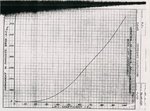Since you brought this in public:
In one post...and he is gone. First HoHun and now badger45. I can tell when somebody knows his stuff, and badger45 was one. So thanks a lot for ruining a good conversation.
A good conversation is one that does not involve insults and childish name calling. We do not tolerate that on this forum.
Everyone has a bad day, and we mods like to give everyone the benefit of the doubt. When you ignore a mods warnings and refuse to remain civil, that is when action is taken.
If you consider conversations poluted with insults and childish behavior to be good conversations, well...
Last edited:

